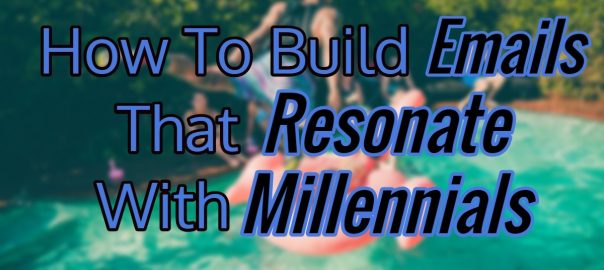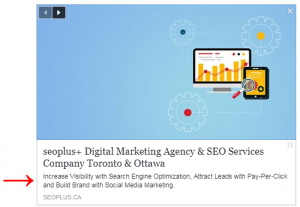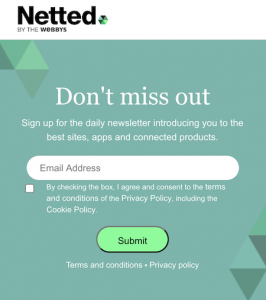
Whether they’re on your marketing radar right now or not, Millennials should still receive some of your attention, since they will soon become the majority audience for everyone. A lot has been said in recent years about who this generation is, what they like and dislike, what they react to, and how they’re different from Gen Xers and Baby Boomers.
What’s certain, though, is that they can’t be ignored anymore, and they’re changing the rules of customer to brand engagement, and vice versa. This is a generation that values authenticity, that has high expectations from the brands it’s supporting, but which is also very open to promoting and advocating for the things it believes in, whether it’s ideals or products.
They might not outnumber other generations yet, but they use technology much more intensively, and they’ve fused it into their lives. According to a Pew Research Center study, about 74% of Millennials think that new technology improves the quality of their lives, and 56% think that it allows them to use their time more efficiently.
The thing that brands and businesses need to know about Millennials is that they’re a very social and interactive bunch, but they’re picky about who they interact with, and where. Studies in recent years have proven that a great majority of the folks born between 1981 and 2000 are very open to interacting with brands via social media.
But if you want them to pay attention to your offers, convert, or subscribe, you need to reach them somewhere else, in a context where they’re more prone to engage with your message.
To the surprise of many, that’s still email.
Email Goes Back To Its Origins
There is a slight difference, however, in that Millennials use email as it was originally intended – for short, and to the point messaging about important things. Unlike Generation X representatives or Baby Boomers, who may use email for files and photo sharing, and other uses, Millennials know there are other better tools and apps for those things. So for them, email is just about effective, but “official” messaging.
That’s right, Britney. Everyone.
The same PRC survey found that over 90% of the young people who are currently in college or have attended college, use the Internet at least occasionally. This means that, whether you like it or not, this is the most connected generation we’ve seen so far, and most of them are, or are about to become, your prospective customers.
You have to adapt to their way of moving through the web. In a study conducted by Adestra in 2016, it was found that 73% of Millennials prefer to receive content (whether promotional or informational) from brands via email. However, Adobe reports that they dislike being pestered with repetitive emails and intrusive messages, so there is a fine balance to achieve when you’re reaching out to them.
The following guidelines are insights drawn from these, and other studies like them that focus on how Millennials (and the older generations, by comparison) react to, and interact with the online world and online marketing tactics, and what they’re most likely to respond to.
The goal is to extract the best information on how to write beautiful emails that engage Millennials, and convince them to read your message or, even better, take the actions you want them to.
1. The Subject Line Should Be Honest And Short
It all starts with the subject line of your email, even if it might not be the first you compose. If you’ve seen through one or more email campaigns so far, you know how much the subject line weighs on open rates. It’s no different with Millennials, except you have to take a few things into consideration.
Millennials are scared of email when it comes to using it in an official manner, or for work. They have a tendency to become wordy and overly polite, since that’s what they’re rewarded for throughout school. But it’s not how they talk amongst each other, or how they address brands or celebrities, given the chance.
They’re used to absorbing loads of information throughout the day, but they take it in small, snackable bites. This particular fact applies to how you write both your subject line and the body of your email. Make it short and sweet.
Can you handle that, Millennials?
Use a consistent tone and language throughout all your marketing channels, but personalise your approach when you write your subject line. Millennials can be subscribed to a lot of newsletters of brands and influencers they follow, which increases the chance that they’ll ignore your email, or mark it as spam unless it draws their attention. The study conducted by Adestra discovered that about 40% of Millennials check their email first thing in the morning after shutting down the alarm clock.
But they also practice inbox triaging, which is scanning their inboxes, marking any emails they might want to read later, and deleting or marking as spam those they aren’t interested in. So your subject line can make the difference between being read on the spot, being read later, or never being read at all.
The same survey quotes that 79% of Millennials delete ugly emails. A poor, unconvincing subject line might have the same effect.
2. The Body Of The Email
A. Write The Right Content
Content is the key, even in email. Everywhere you want to share your message, keep context in mind in order to promote the right kind of engagement. What is the medium of the message, who is your audience, and what are you trying to achieve?
The stats above are just as much about how Millennials will react to what you say in your emails. Consider the time of day for every email you send, and how the recipient might respond to what you’re asking of them. Just because Millennials are so attached to their mobile devices – 90% use smartphones to check their emails (Adestra) -, and open email first thing in the morning, doesn’t mean they’ll be inclined to consider special offers, coupons, or exclusive deals.
But they might be inclined to read informational or entertaining content, or finding out about an upcoming event with possible benefits for them. So depending on the time of day, craft your messages to match what your reader might be doing and how they might be feeling at that particular moment.
She didn’t read it, bro.
This also depends on your particular email list. Test messages and see how your audience reacts to your emails.
B. Make Your Emails Beautiful And Responsive
As stated above, and supported by numerous surveys, the great majority of Millennials read their emails on mobile devices. This means that if you haven’t yet, it’s time to start making your emails responsive.
Minimal changes include using larger fonts for your texts, using single column arrangement, and short sentences and paragraphs. This not only makes content more digestible, but ensures it will render better on mobile. Another great tip is to add white space around your links and make them easier to tap, counting for fat-finger errors.
You want to reduce clutter as much as possible, and also make sharing and unsubscribing options prominent. Which brings me to my next point.
C. Make Sharing Easy
There’s never a great percentage of people willing to share content outside of their emails to social profiles, but you still need to make it available for those few who are inclined to do it. Plus, the more informative or entertaining your content is, the likelier it is they will share it.
Adding large, accessible share buttons that render well on mobile display is an unavoidable best practice, and it takes minimal tweaking from you. Just think of a situation where you’re emailing your subscribers about a contest or promotion that depends on them sharing content on their social profiles. You want to make sure this is a simple, frustration-free action for them to take.
D. Personalise Your Message
Another thing Millennials are keen on is authenticity in their interaction with brands and companies. So the emails you’re sending them should not only address them by their first name, but they should also feature a clear “from” name, either your brand’s, or – preferably – a real person within your company.
The details in your emails.
Allow them the option to reply back in case they’ve got more questions, and make it clear that they’ll be talking to a real person. The same is true about Millennials when they have to contact a company to ask for clarifications, support, billing information, updates, or other services. Knowing they can address a real person in order to solve their issues raises trust in your brand.
E. Add Images And/or Video To Increase Engagement
As noted in this Marketing Land article quoting a Principal Financial Group study, 18% of Millennials said they use email to conduct product research, with regular search coming first at 45%. That means that you have a very good shot at introducing your email list members with your products or services, and showcasing them through images and video.
In fact, you can even deliver your entire content through video. As much as 32% of Millennials are likely to have watched video online in the last 24 hours, which makes them the generation with the highest percentage of video consumption. And, of course, we already know people like to share content if it makes them look better in their circles, especially if that content is video.
So you may want to seriously consider creating unique and quality videos that inform or entertain your audience
F. Make Unsubscribing Easy
I know I’m kinda repeating myself, but this one is important. Over 60% of people from all age groups said they aren’t afraid of using the “Unsubscribe” button anymore. It doesn’t necessarily have to be at the top of your emails, but make sure it’s easy to see and click/touch both on desktop and on mobile screens.
3. Clean Up Your Email List Regularly
According to the Adestra study I’ve mentioned here before, only 40% of Millennials report to give their real email address when they want to unlock content. Another 40% leaves the site, while a smaller percentage gives out fake addresses, or an address they’ve created especially for marketing emails.
Before anything, this should make you consider always offering valuable content for free, at least when readers first encounter you, so they can check out what they’re subscribing to.
You’ll also want to clean up your email lists from time to time, and get rid of contacts that never open your emails. If you market a wide array of products or services, you might also consider segmenting your lists based on sex, age, location, and other demographics, and take a different, bespoke approach to each of them, to increase the chances of catching their attention.
4. Consider Using Successive Emails
Another point I was trying to make earlier on was that although they prefer short form content, concentrated messages that get to the point, Millennials are also used to digesting more information during the day. About 90% of Millennials say they check their personal email from work, and their work emails from home.
They check their inbox several times throughout the day, but not necessarily because they’re looking to take a certain action. Sometimes they do it out of boredom. In this case, they might open your email and read your content, but not have the mindset to do something about it, because they’re in a different context, such as waiting in line, being on the bus, etc.
Or worse.
So an email series makes sense, because on a future email, you might find them in a more actionable mood, but this time a little better informed on who you are and what you’re saying. This might be that step that converts them into your customers, or convinces them that upgrading is perfect for them.
In Conclusion
Millennials are a very reachable and approachable bunch. They love interacting, as long as you do it in their own terms. Luckily for us, now we also have the data to back up our decisions and inform us on the best way to email Millennials.
It’s all about crafting catchy and unique content, making your emails responsive, adding media, and making it shareable. Now start defining your young audience, test your emails, and tweak them until you start getting the results you expect.
How To Build Emails That Resonate With Millennials
The post How To Build Emails That Resonate With Millennials appeared first on Search Engine People Blog.
Search Engine People Blog(56)










